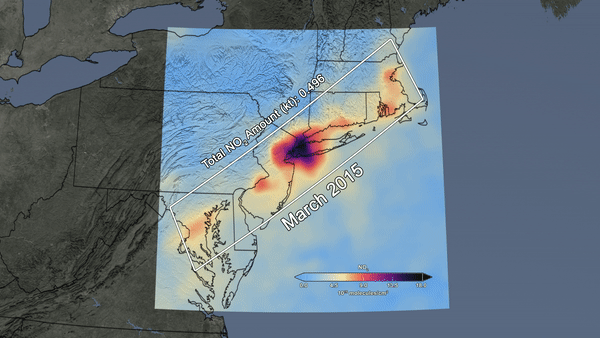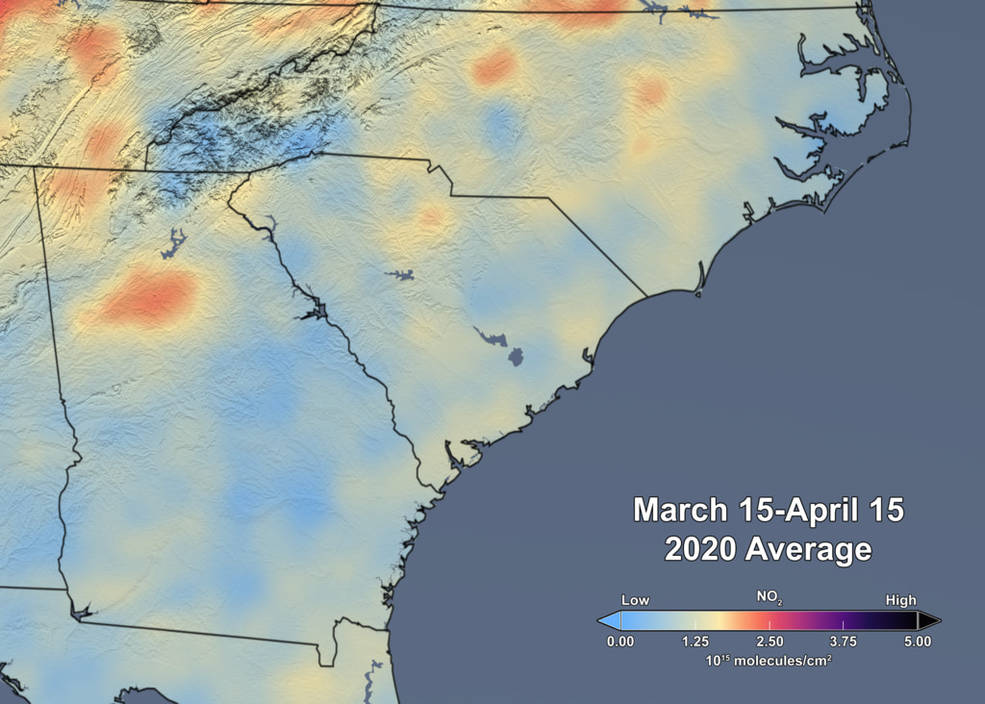Drop in fossil fuel emissions from coronavirus response is changing Earth's air, NASA satellites show

Fossil fuel emissions are dropping as a result of changing human behaviors in response to COVID-19, the disease caused by the novel coronavirus, NASA satellites continue to show.
NASA can see the effects of pollutants like fossil fuels from space. The agency has a host of Earth-orbiting satellites, computer-based models and datasets and sensors located on our planet's surface that continuously monitor the environment, allowing scientists to observe the growing effects of this pandemic. The agency has also started up brand new projects to specifically track and study how COVID-19 is affecting our planet's environment and atmosphere.
"The world's response to the pandemic is an unintended experiment that is giving us a chance to test our understanding of various air pollution emission sources," Barry Lefer, NASA's program scientist for tropospheric composition at NASA HQ, said in a statement.
Related: Shutdowns from coronavirus create blue skies in California
Some of these efforts are specifically looking at fossil fuel emissions from space. Joanna Joiner and Bryan Duncan, researchers at NASA's Goddard Space Flight Center in Greenbelt, Maryland, are creating maps and images showing the changing levels of nitrogen dioxide, an air pollutant often associated with burning fossil fuels, in the atmosphere. This data not only informs scientists about how our environment is changing but also how economies can change in response.
To study these changes, researchers are working with data from instruments including OMI (Ozone Monitoring Instrument), a Dutch-Finnish instrument aboard NASA's Aura satellite and the Tropospheric Monitoring Instrument (TROPOMI) on the European Space Agency's Sentinel-5P satellite. Duncan and Joiner are using OMI data because, while TROPOMI data is more high-resolution, OMI has been around for longer and so it has more data to draw upon.
"We're looking at changes in nitrogen dioxide to understand how economies are changing," Duncan said in the same statement. "If the amount of pollution emitted continues to grow over time, your economy is likely booming."
Get the Space.com Newsletter
Breaking space news, the latest updates on rocket launches, skywatching events and more!

Since the earlier days of the pandemic, satellites have been showing changes in nitrogen dioxide levels and so far, significant changes have been spotted over countries including Italy and China.
Joiner and Duncan have been using OMI's data, which spans all the way back to 2005, to continue to TK new and better comparisons to show how gases in Earth's atmosphere are changing.
While all NASA employees whose work is not mission-essential are working remotely, this hasn't stopped the agency from making progress with these efforts, as Joiner, Duncan and other NASA researchers continue to monitor Earth using the critical satellite data.
"Much like our satellites, our work continues remotely," Sandra Cauffman, the acting director for NASA's Earth Science Division, said in a statement. "NASA Earth scientists continue to collect and analyze satellite and ground-based data on a global scale, and our programs are helping to characterize and understand the global environmental signals. We do this by analyzing existing, long-term datasets and funding new, cutting-edge research."
- Dramatic effect of coronavirus lockdowns seen from space
- NASA center in California issues mandatory work-from-home order
- Coronavirus prevention measures take their toll on astronomy
Follow Chelsea Gohd on Twitter @chelsea_gohd. Follow us on Twitter @Spacedotcom and on Facebook.
OFFER: Save 45% on 'All About Space' 'How it Works' and 'All About History'!
For a limited time, you can take out a digital subscription to any of our best-selling science magazines for just $2.38 per month, or 45% off the standard price for the first three months.
Join our Space Forums to keep talking space on the latest missions, night sky and more! And if you have a news tip, correction or comment, let us know at: community@space.com.

Chelsea “Foxanne” Gohd joined Space.com in 2018 and is now a Senior Writer, writing about everything from climate change to planetary science and human spaceflight in both articles and on-camera in videos. With a degree in Public Health and biological sciences, Chelsea has written and worked for institutions including the American Museum of Natural History, Scientific American, Discover Magazine Blog, Astronomy Magazine and Live Science. When not writing, editing or filming something space-y, Chelsea "Foxanne" Gohd is writing music and performing as Foxanne, even launching a song to space in 2021 with Inspiration4. You can follow her on Twitter @chelsea_gohd and @foxannemusic.










